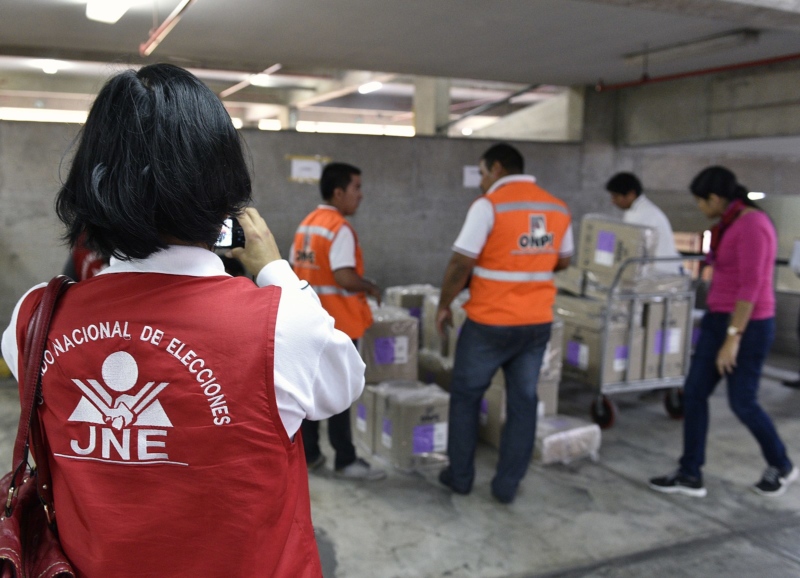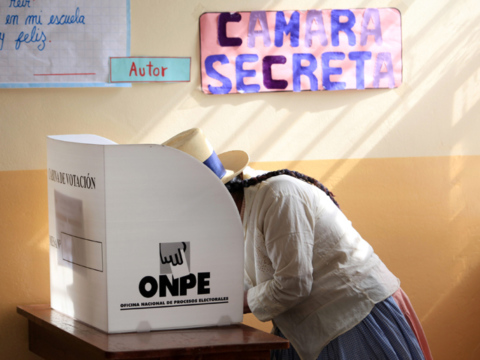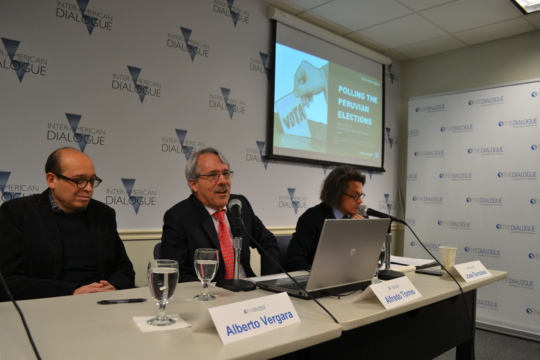Peru’s Election and Beyond: What’s Next?
Peruvians want an evolution, not a revolution.
In an interview with the Hopkins Podcast on Foreign Affairs, Michael Shifter, president of the Inter-American Dialogue, discussed what the 2021 Peruvian Presidential Elections meant for the country as a whole. He answered questions regarding the background of the presidential candidates and how the results of this election could be a potential trend for the future of Latin American politics.
Question (Q): On June 6, Peru possibly had one of its most consequential elections in its 200-year-old history. Keiko Fujimori, on the right, and Pedro Castillo, on the left, competed in the run-off election for Peru’s presidency, and the only thing they had in common was the large polarization that their candidacies created. Can you give a brief description of the state of Peru’s politics and economy before the election? What issues were the voters looking at?
Answer (A): The overwhelming issue in Peru is the devastation from the pandemic. According to John Hopkins University, Peru has the very unhappy distinction of having the highest per capita deaths in the world, doubling the second country in the world which is Hungary. This has ravaged the country’s health system and economy. Poverty increased by 10 percent between 2020 and 2021. Unemployment has skyrocketed. The backdrop of this election was a very profound economic and health crisis, coupled with a political and institutional crisis. Last November, the country had three presidents in one week. They recently had a president who had been impeached. Peru has long had pretty dismal precarious politics. Every single elected Peruvian president since 1985 has faced serious credible charges of corruption. The politics was quite dismal, which was aggregated by the pandemic. The economy had been doing quite well for a while, but in the last couple of years, it has slowed down. It has been devasted by the pandemic in terms of the numbers of poor and the numbers of the unemployed.
Q: On April 11, the first round of the election happened and out of the first round came out Keiko Fujimori, on the right, and Pedro Castillo, on the left. Could you provide an introduction to both Keiko and Pedro? Who are they? What are their backgrounds? What are their politics? Most importantly, what did they promise to do if they were elected?
A: Both candidates, Pedro Castillo and Keiko Fujimori were immensely unpopular. Over 80 percent of Peruvians voted for neither one of the candidates or voted in blank. Keiko Fujimori is much more well known. She has been a member of Congress. She heads Fuerza Popular, a very right-wing conservative party. It was very much aligned with her father, who was a president who ruled autocratically, was accused of corruption and human rights violations during the 1990s and is now serving a prison term of 25 years. She had run for president twice before, the last time in 2016 where she lost very narrowly to Pedro Pablo Kuczynski. She promised continued pro-market policies and claimed to want to tackle corruption. However, she did not have credibility on the front of corruption because of her father’s rule and also because she faced charges of corruption and still does related to the Odebrecht scandal. Pedro Castillo was the real surprise. He had no connection whatsoever to the Lima-based economic and political elites. He came into some prominence in 2017 with a teachers' strike. He has quite radical ideas. His party, Peru Libre, has a Marxist-Leninist platform. What Castillo promised was to address the profound inequalities and injustices in Peru. He accused the economic model that the elites promoted for several decades, since the 1990s really, of ignoring the countries overwhelming poor and not investing in education and health. He was therefore really trying to tap into the anger and indignation of Peru’s poor. He is a campesino. We have never seen anybody with that background go to a point where he seems to be very headed to be the next president of Peru.
Q: Just as you mentioned by a margin of less than 1 percent, Pedro Castillo seems to have come out on top, although official election results have not been finalized completely. How did this result line up with pre-election predictions? Was this a surprising result for Castillo to have potentially come out on top?
A: It was a surprise. Keiko Fujimori is a polarizing figure. She had very high negatives in the polls. In the beginning, after the April 11 first round, Castillo was up by a margin of about 11-12 percent, and Fujimori narrowed that margin. As you said, Castillo has won by some 40,000-50,000 votes because there was a real campaign of fear against Castillo that he would turn Peru into another Venezuela. Castillo did the same with Fujimori saying that Fujimori would return to the autocratic corrupt rule and to a government for the elites and not for the poor. Fujimori was long-predicted that she had a pretty good chance of getting to the second round. I don’t think many people predicted that she would be president, but that she would get to the second round because she has her Fuerza Popular party, she is well-known, and she has a base of support even though she has high negatives. On the other hand, just months before the April 11 vote, very few people, if anybody really, saw it coming in regards to Castillo. It was only in the final weeks of the campaign that the Castillo candidacy gained some traction among the poorest areas of the country.
[...]
Peruvians want an evolution, not a revolution.
Everything you need to know about Peru’s presidential elections.
Insight and analysis into an unpredictable presidential contest
 Cancillería del Perú / CC BY-SA 2.0
Cancillería del Perú / CC BY-SA 2.0

 Video
Video